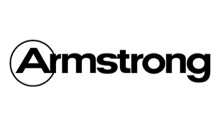Luxury Vinyl Flooring Questions and Answers
1. What is the difference between "luxury vinyl" and the non-luxury type?
Luxury vinyl is a term applied to recent flooring innovations, including a vinyl layer. Traditional vinyl flooring is produced in large rolls and installed as a single sheet (or with as few pieces as possible in a given room). Another name for this form of flooring is sheet vinyl. Luxury vinyl is produced in the form of planks or tiles. The planks tend to be thinner than tiles. Generally, they are made to look like wood – sometimes very realistically – with a photographic image layer, clear protective top layers, and, in some instances, embossing to create wood-like surface textures. The tile form of the product is generally thicker, often consisting of a base comprised of stone dust and binder, with a photographic image printed on vinyl, topped with clear protective layers. So, while the tiles and planks are both called luxury vinyl, you can see that there is quite a bit of difference between them. The differences extend to the installation factors, as well. Luxury vinyl plank installations are widely promoted as great DIY projects, requiring few tools and little prior floor installation experience. Check out a few installation videos online and judge for yourself.
2. What are the best places to consider luxury vinyl flooring?
That is a more difficult question to answer than you probably imagine. Appearance-wise, you can make a nice-looking floor from luxury vinyl planks and tiles. Performance-wise, we have seen the planks utilized in retail settings, successfully so far, that get far more foot traffic than typical homes. It is a great category to consider for baths and kitchens. So, you should at least look at these materials if you have any questions about what to install. A couple of factors make luxury vinyl move to the very top of the list for some settings: ease of installation and affordability. If you had a rental property where you needed to replace a kitchen floor and plan to do it yourself, you should definitely be considering luxury vinyl. As with all installations, the condition of the subfloor is a critical factor.
3. Has luxury vinyl been around long enough for people to know whether or not it holds up over time?
Yes, luxury vinyl has enough of a track record for Halverson Flooring to stand behind the brands we sell. The technology for producing the top wear layers has proven itself, and the systems for affixing the planks to one another have stood up under heavy use over years of foot traffic.
4. What is the chance of damaging luxury vinyl?
Of all the types of damage to flooring – moisture, denting, cracking, scratching, scuffing (wear from rubbing), gouging – luxury vinyl products are not very susceptible to moisture, denting, and cracking damage, moderately affected by abrasion and scratching, and somewhat easy to damage from gouging. Gouges might be incurred by, for example, dragging a refrigerator across the floor. The good news is that many varieties of vinyl plank floors make it exceptionally easy to replace damaged planks or tiles. Worst-case scenario, a luxury vinyl tile is no more difficult to replace than a ceramic tile.
5. Does luxury vinyl require special cleaning?
Luxury vinyl is the easiest flooring to clean. Keep it swept, free of dirt and grit, give it an occasional damp mopping, and get on with your higher purpose in life.
6. Do I need a ceramic cutter or tile saw to cut luxury vinyl tiles?
No, you don't. You need a metal straight edge and a sharp utility knife. Use the metal straight edge as a guide, use the knife to score the image side of the tile, and snap the tile along the score, bending it away from the scored cut. Make sure the scoring cuts through the image layer so that your bend only has to break the tile base material.
7. Please describe the "subfloor" and why it matters.
A subfloor can be a solid concrete slab or a series of layers of wood and other products. The slab can serve as the structural support – the element that gives the floor strength and stability – and at the same time as the subfloor, which is the layer onto which the floor covering materials are installed. For wood floors, wooden beams called joists are positioned across the space to provide strength and stability. Then, a layer, usually plywood, goes atop the joists, creating a continuous, smooth surface onto which floor-covering materials can be installed. That is, technically, what the sub-floor is. When installing floor covering, some flooring requires a layer of padding on top of the subfloor – carpeting, laminate, and hardwood, for example. Sometimes, a vapor barrier is placed before the padding. For luxury vinyl, either subfloor type is a suitable flooring base. The condition of the subfloor is the critical factor. Simply put, it must be dry, clean, and free of bumps or voids. A bump or a void in the subfloor will likely show up as a bump or void in the finished floor.
Some of our brands we love
At Halverson Flooring, we want to ensure that you're getting the highest quality flooring! See our Featured Brands and Manufacturers below!





